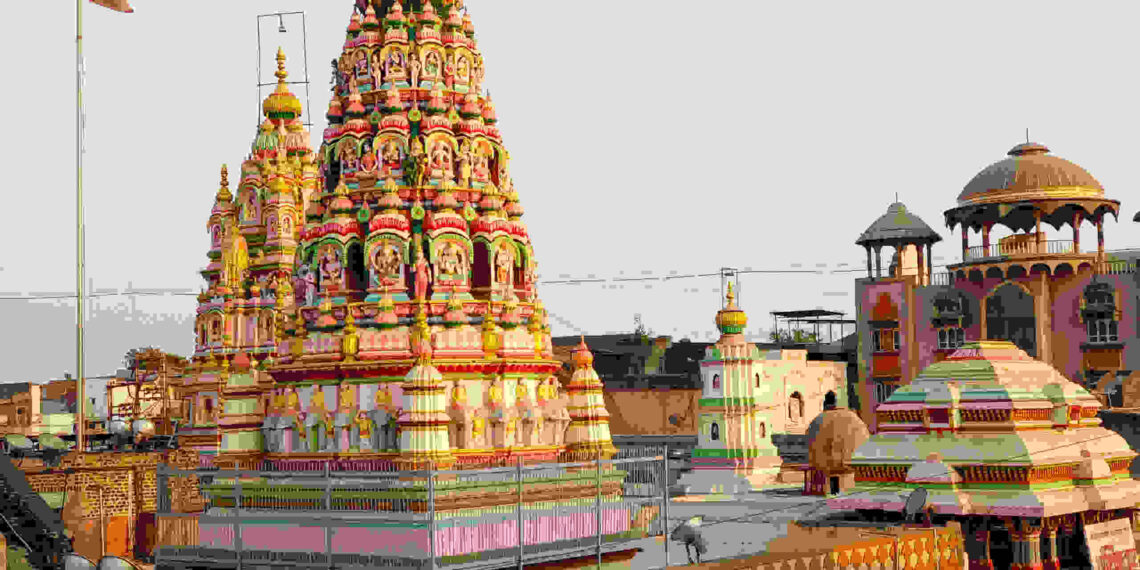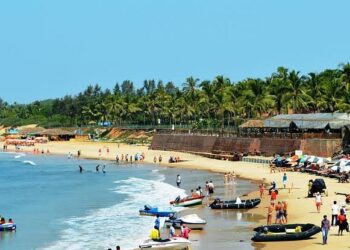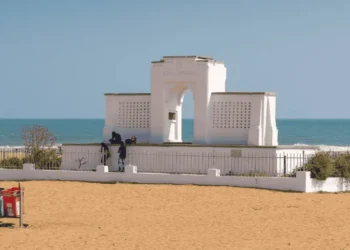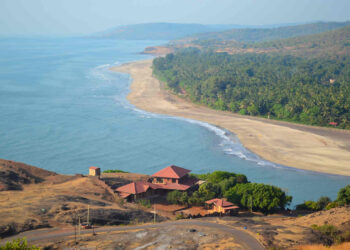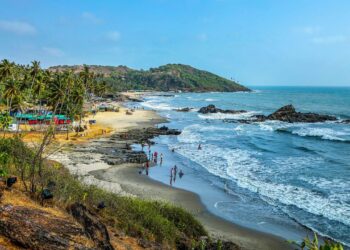Situated on the serene banks of the Chandrabhaga River in Solapur district, Maharashtra, the Pandharpur Vitthal Temple, dedicated to Lord Vithoba, a cherished form of Lord Vishnu, is one of India’s most revered Hindu shrines. Located in the heart of Pandharpur town, about 2 km from the main market, its ancient sanctum, intricate carvings, and divine aura draw devotees and pilgrims from across the country. Known as the spiritual capital of Maharashtra, the temple is central to the Varkari sect, radiating devotion. If you’re eager to visit this sacred abode, here’s a detailed guide on its significance, architecture, rituals, and travel tips for your journey.
Fun Fact: Locals call it “Vithoba’s Darbar” because devotees believe Lord Vithoba stands here like a king, welcoming all with compassion.
Mythological Importance
The Pandharpur Vitthal Temple carries timeless legends. One story tells of a humble devotee named Pundalik, whose selfless service to his parents moved Lord Vishnu to appear as Vithoba, standing with hands on hips. Another tale speaks of Saint Jnaneshwar, who meditated by the Chandrabhaga River, receiving Vithoba’s divine vision in a dream. Local belief holds that the river’s gentle waters hold sacred power, washing away sins and granting peace. This makes the temple a vital Vishnu shrine, tied to love and divine grace.
Historical Overview
The temple began in the 9th century, under the Rashtrakuta dynasty, though some say worship started earlier. Pandharpur, 70 km from Solapur, was a holy place, as old texts note. A stone inscription from 880 CE near the riverbank marks a sacred idol, but the temple grew with Rashtrakuta kings. In the 12th century, Yadava rulers added stone arches, as carvings show. The 1600s saw Maratha chiefs build a grand courtyard, making it a lively pilgrimage spot, Solapur records say. In the 1800s, Peshwa rulers donated silver lamps, and prayers continued. After 1947, Maharashtra’s leaders took charge, and the Temple Trust now tends it. From 2014 to 2019, repairs added new paths while keeping the old sanctum. Marathi abhangs by saints like Tukaram, who sang of Vithoba, spread its name. Today, it stands as a light of faith, calling thousands to Pandharpur’s riverbank.
Architecture of Pandharpur Vitthal Temple
The Pandharpur Vitthal Temple, covering 2 acres, blends Rashtrakuta and Maratha styles, rooted in the river’s tranquil charm. The gopuram, rebuilt in 1700, rises high with stone carvings of Vithoba with a smile, Krishna with a flute, and devotees praying, painted in white and gold. A stone gate with floral motifs leads to the sanctum, where the Vithoba idol, 3 feet tall, stands under a plain vimana, its flat roof showing simplicity. The sanctum’s basalt walls, worn by time, hold faint Rashtrakuta etchings of Vithoba’s joyful dance, lit by ghee lamps.
Small shrines for Rukmini, Lakshmi, and Garuda are scattered around the complex, carved from local granite with open stone covers. The Rukmini shrine, from 1100 CE, shows her with a lotus, granting love. The Lakshmi shrine, by the river, depicts her with coins, calling for wealth. The Garuda shrine, near the courtyard, shows the eagle with wings folded, carved in devotion. These shrines, though small, join the temple’s worship, offering paths to faith.
Set by the Chandrabhaga River, the temple is reached by a short walk from Pandharpur town, with stone paths worn by pilgrims’ feet. The paths pass small rocks with old Vithoba marks, some by the water, others under the sky. The temple courtyard, paved with rough granite, feels holy, shaded by neem and tamarind trees. A stone ghat, touching the river, is used for ritual baths, its edges carved with lotus shapes, a Maratha touch. The temple’s low walls, made of plain stone, have niches for Naga figures, said to guard the grounds.
Carvings on pillars and walls tell Vithoba’s stories—his bond with Pundalik, his playful Krishna form, and his tie to Rukmini—etched to guide devotees. The 2019 repairs added firm paths but kept the riverbank’s sacred feel, making it a quiet place for prayer.
Rituals and Festivals
Ashadhi Ekadashi, in June or July, is the most celebrated festival in the temple, honoring Vithoba with Dindi Yatra (pilgrim marches) and chariot processions. Kartiki Ekadashi, in October or November, has Deepotsav with lamp-lighting by the river. Maghi Ekadashi, in January or February, sees abhang singing. Daily worship includes Kakada Aarti (morning prayers), Archana (offerings), and Shej Aarti (night ritual). Services like Abhishekam and Vishnu Puja can be booked at the temple office. A prasad stall gives free jaggery laddus to devotees. Tulsi Archana, offering tulsi leaves on Wednesdays, is for peace and love.
How to Get There:
Air: Pune Airport, 200 km away, is nearest. Taxis take 3.5 hours, costing ₹4000-6000.
Train: Pandharpur Railway Station, 2 km away, links to Mumbai (7 hours) and Pune (5 hours). Autos to the temple cost ₹50-100.
Road: Pandharpur is 70 km from Solapur. Buses from Solapur Bus Stand (1.5 hours) cost ₹100; autos from Pandharpur town cost ₹20-40.
Places to Stay: Pandharpur has guesthouses like Vithoba Rest House (₹500-1500). Solapur, 70 km away, offers hotels like Hotel Lotus (₹1500-3000). Stalls by the temple sell poha, bhakri, and tea.
Best Time to Visit: October to March has cool weather, 20-30°C. Weekdays are calm. Ashadhi Ekadashi brings crowds, so book early.
Nearby Attractions: Mangalwedha’s Rukmini Temple, 30 km away, honors Vithoba’s consort. Solapur’s Siddheshwar Temple, 70 km away, is a Shiva shrine. Akkalkot’s Swami Samarth Temple, 90 km away, draws devotees.
Final Thoughts
The Pandharpur Vitthal Temple in Solapur, Maharashtra, a divine land of old tales in India, is a gem among sacred sites, set by its holy riverbank. The divine presence of Lord Vithoba has seeped into every nook and corner, making it a must-see temple among the state’s spiritual treasures.
